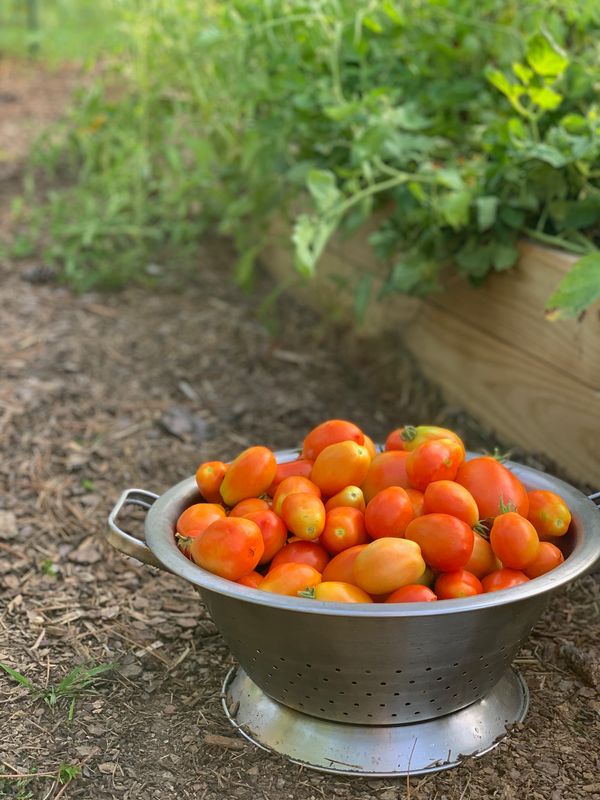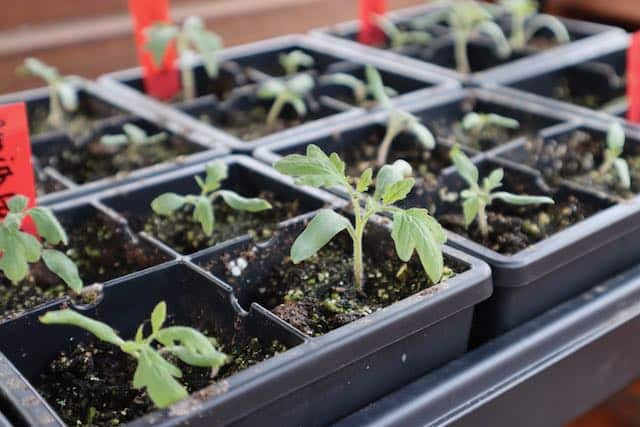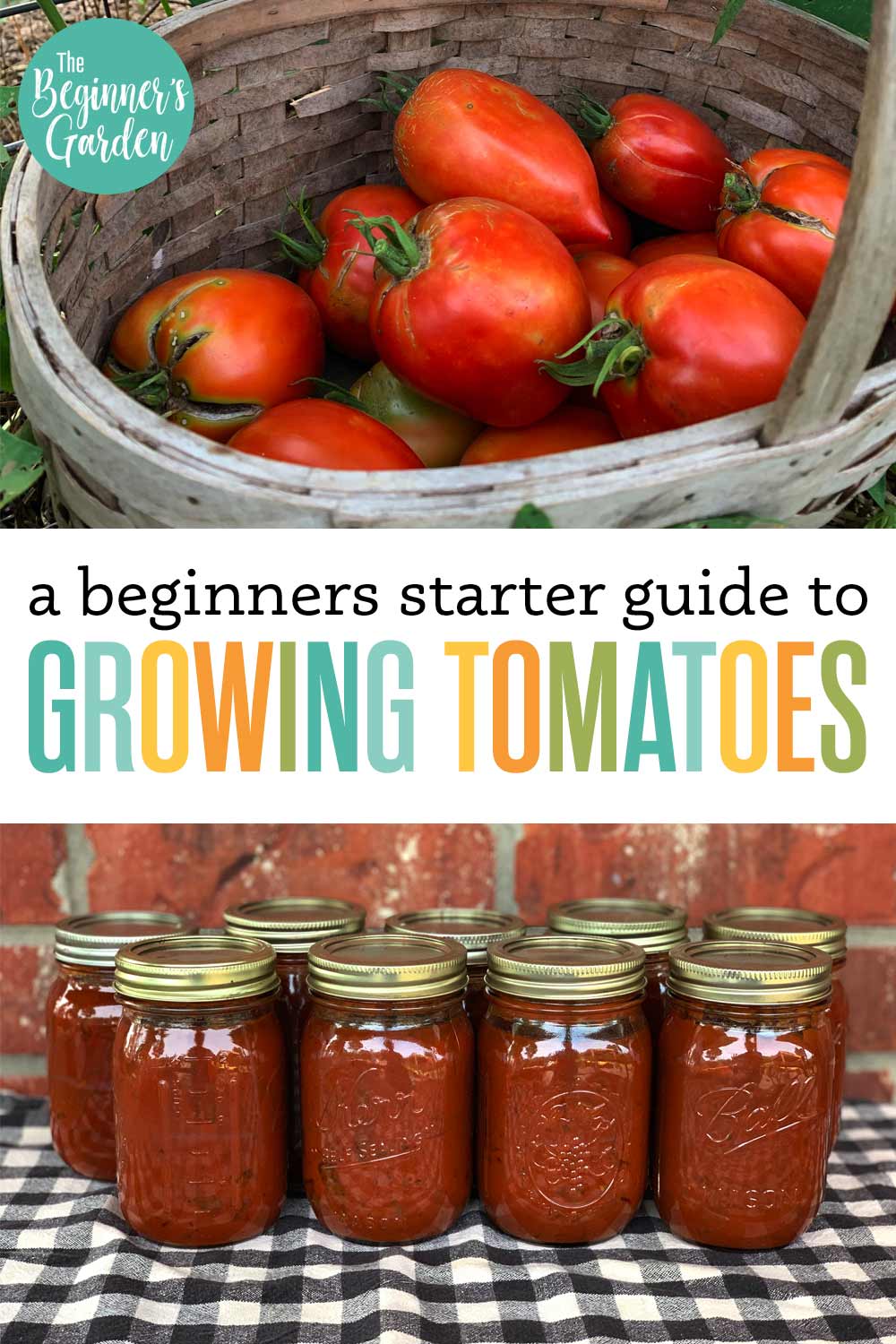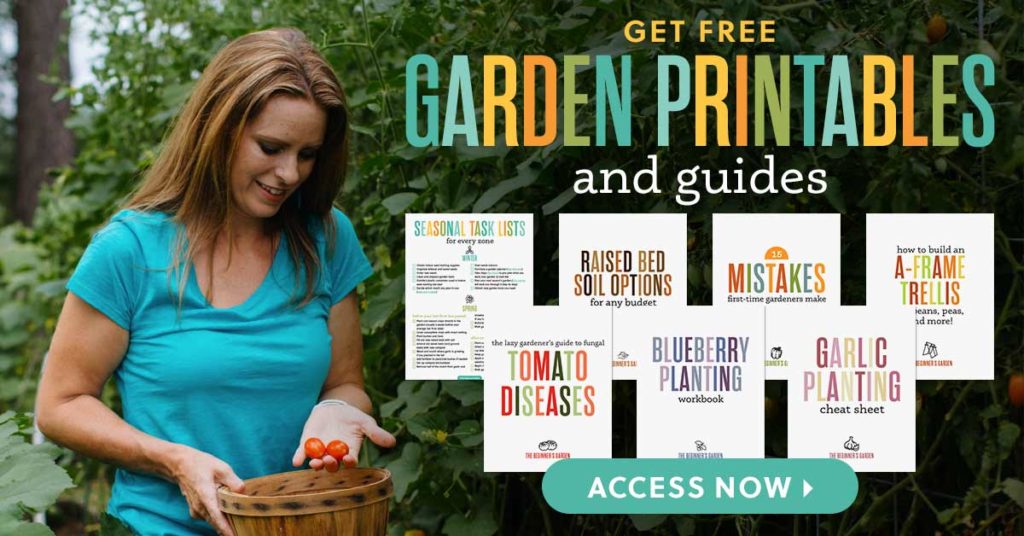How to Grow Tomatoes: Beginners Starter Guide
When people begin their gardening journey, one of the first places they start is with tomatoes. While tomato plants can be resilient and forgiving at times, there are some tricks to growing great tomatoes.
When should you grow tomatoes?
Tomatoes are a warm season crop. They cannot handle a frost so you should wait until after your last frost date. But avoiding a frost isn’t the only helpful guide to knowing when to plant. Ideally, you want to wait until your average night time temps consistently stay above 50 degrees. By waiting to plant until nighttime temperatures are in the 50s and above, not only are you more likely to avoid a late frost, but tomatoes themselves don’t grow well when nights are below that. While they won’t die with nighttime temperatures in the 40s, they also won’t thrive. They will often just sit there. Warmth is conducive to their growth.
But, if you live in an area that gets hot summers (consistently over 85 degrees F), don’t wait too late. Tomatoes often won’t produce fruit in high heat. Once temperatures stay above 90 degrees during the day and rise into the 70s at night, the blossoms may drop off and not produce fruit.
Beginning gardeners will often wonder why their plant isn’t producing in late July or August, when temperatures climb, but it’s simply because the flowers struggle to pollinate in that heat (and often in high humidity as well). The good news is, as long as the plant stays healthy, flowers and fruit will usually return when the temperatures moderate.
They key then, is to plant tomatoes after a frost has passed and nighttime temperatures have settled into the 50s and above but also early enough so that the plants will begin producing fruit before heat sets in.
If you live in an area without hot summers, you only have to pay attention to the the frost and nighttime temperatures. Conversely, if you live in an area without frost, try to time your planting so that the crops will flower and fruit before the heat sets in. You can also plant a late summer/fall planting.
Learn more about plant timing of tomatoes (and peppers) here.

Where should you plant tomatoes?
Tomatoes like well-draining soil. This makes them great candidates for raised beds, containers, or even straw bale gardening. (Click here to read more about my first year with straw bale gardening.) If you grow in the ground, ensure the soil doesn’t retain water by adding plenty of organic matter. Also do not plant where water pools after a rainfall.
Adding organic matter — mostly in the form of high quality compost — to your soil can help to feed the plants. Be careful not to use a fertilizer with a high amount of nitrogen, and use care in using composts with a high amount of animal manure, which is high in nitrogen.
Too much nitrogen added to the soil can cause an abundance of leafy growth at the expense of fruit production. A proliferation of green growth is also attractive to pests.
When selecting your garden site, choose a sunny location for tomatoes. Tomato plants need at least 6 hours of sunlight per day, though 8 or more is ideal. Giving them afternoon shade can help in the heat of the summer, so if you have a partially shade location, afternoon shade is better. Sometimes we don’t always have that choice, though, so when in doubt, opt for full sun.
Consistent water is important for tomatoes. This is especially important when the heat of the summer sets in and when they begin to set fruit. Inconsistent water is the main cause of blossom-end rot, because calcium that’s usually present in the soil cannot get to the fruit. So, while well-draining soil is essential and young tomatoes can languish in waterlogged soil, more water is needed for mature, fruiting plants.

Planting Tips
- Tomatoes should be seed started indoors or purchased as transplants at the garden center.
- If seed starting, sow indoors 6 weeks before average last frost date.
- If purchasing transplants, don’t always go for the biggest plant or one that’s flowering already. Look for young, stocky, deep green plants. They will transition to your garden better.
- Dig a deep hole when planting and trim off the lower leaves; more roots will form along the stem making it a healthier plant overall.
- What you add to the hole as far as fertilizers or additives is really up to you. Adding eggshells for calcium is not a bad idea, but those will not break down in time to help this year’s crop.
- When planting: fill the hole about halfway with water, plant the tomato deep, fill the hole with soil and water again.
- Add mulch right away after planting to help retain moisture and prevent early blight.
Growing Tips
- After the plants are about two feet tall, trim the lower leaves off the plant to prevent diseases, usually 12 inches off the ground is good.
- Don’t prune out suckers if the plant is a determinate variety. Learn more about determinate vs. indeterminate varieties of tomatoes.
- Prune any diseased leaves off the plant in the afternoon or evening to prevent the spread of the disease.
- Some common pests for tomatoes are aphids, hornworms, armyworms, and leaf footed bugs.
- Tomatoes need to be trellised in order to support all the leafy growth and tomatoes they form. Watch the video linked below to choose a good method for you.
Harvesting Tips and Beginner Varieties
It’s best to harvest tomatoes when they are in the “breaker stage” or just after the tomato has began to turn its mature color. By harvesting a bit early, flavor is retained when ripened indoors on a countertop, and you can prevent fruit damage. Worms like hornworms and armyworms will eat through fruit; beetles like leaf-footed bugs and stink bugs pierce a ripe tomato causing a rotten area. Squirrels also love to steal vine-ripened tomatoes. To avoid this damage, harvest early.
The easiest types for beginners to grow are cherry and grape tomatoes. That’s because less work from the plant is required to ripen these smaller fruits. Pests and other issues are also less of a problem, and many of these types don’t suffer with heat stress the way larger-fruited varieties do. Still, if you go with a paste or slicing tomato, great choices are Roma or San Marzano for paste tomatoes and Golden Jubilee for slicing.
A lot of gardeners like to grow large heirloom tomatoes but know that if you are just starting out, these tomatoes aren’t always the easiest grow to full maturity. Give yourself some grace if you struggle at first.
Understanding what grows best in your climate is also very helpful; talk to your local nurseries to get tips on what types grow best in your climate.
Do you get overwhelmed with garden planning?

Subscribe here for my best tips to plan your garden in just 7 days -- all for FREE.
Plus, I'll send you my "In the Garden E-mail" on Fridays, periodic updates on garden resources relevant to you, and you'll receive access to my entire bank of free garden downloads!
You are also agreeing to our privacy policy.



2 Comments